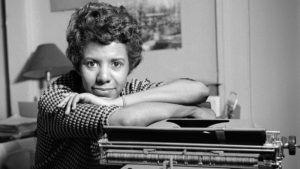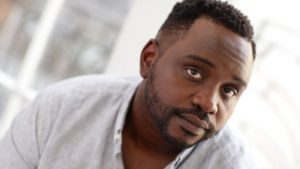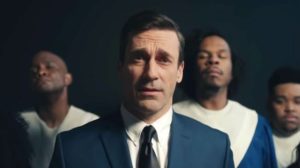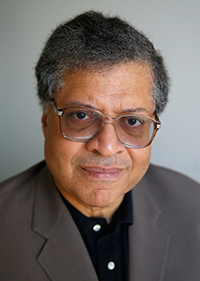2018 was, as I’ve recently written elsewhere, a year of boundary-busting black achievement in the arts and much of what follows below will re-emphasize this point. But it was also a year when you needed black storytellers to step up, lean in and heave grenades at whatever retro-reactionary politics are throwing their weight around the country.
And you also needed these stories to reinforce something you wont hear on Meet the Press or anywhere else on daytime TV: whatever the “alt-right” or its enablers believe they’re trying to defeat has already triumphed. We have become, in pop-cultural terms, so diverse, multi-ethnic and blended together that even using the “multicultural” term so despised by Fox News and its minions is redundant and likely no longer the point. I’m aware that stuff keeps happening to innocent, unarmed people-of-color that mitigates this impact. But whether anybody in positions of power cares to acknowledge it or not, the “culture wars” they’ve been fretting about since at least before the century started have been all but won – and those of us on the winning side should start acting like it no matter what the legacy news organizations say.
It’ll take more time for this news to sink in – and part of acknowledging victory is accepting the fact that there will always be a hard, prickly core of humanity that will never accept the results. But what James Baldwin published sixty-five years ago is truer now – and, for many, harder to accept: “The world is white no longer and it will never be white again.”
My totally subjective, utterly random list of whatever moved or grooved me in 2018 is not totally white or black or pink or yellow. I’m not sure where on the prism it is and I like it that way. As usual – and I cannot stress this enough – these are all in no particular order:
Killing Eve – The wiggiest British TV spy series since a fat white blob immobilized Patrick McGoohan a half-century ago was also the year’s most irresistible dish of nuts: eat one and all the rest are instant history. Nutty is the ideal word to characterize this continent-spanning cat-and-mouse game between a frowsy, doggedly inquisitive MI-5 analyst (Sandra Oh) and a button-cute sociopath (Jodie Comer) who can’t help showing off when she’s murdering people in secret. The story, awash in sultry inference and disorienting menace, carries more double- and triple-crosses per episode than a John Le Carré novel. And creator-producer Phoebe Waller-Bridge’s variations on Luke Jennings’ “Villanelle” series of short-form thrillers are jolting and darkly witty enough to make you feel throughout as though you’re watching Patricia Highsmith convulse on laughing gas. Among the show’s myriad satisfactions is seeing Oh thrive in the deep-dish central role her brilliant career has merited and in beholding the relatively lesser-known Comer, a hoot-and-a-half as an angel-of-death who is as good at her work as she is poignantly flawed. We await a second season with these damaged souls wondering how they and their respective handlers, enablers and hangers-on can possibly continue, much less surpass, the craziness they – and we – have already undergone.
Lorraine Hansbury: Sighted Eyes/Feeling Heart – The year was so crowded with turmoil and exasperation on a day-to-day basis that it was easy to forget that Tracy Heather Strain’s illuminating documentary had aired way back in January on PBS’s American Masters series. Remembering it now renews one’s profound gratitude for not only restoring the author of A Raisin in the Sun to contemporary consciousness, but in bringing forth the complete person in all her complexities, contradictions and, above all, courage, whether in living out her precociously uncompromising radical politics, confronting Bobby Kennedy over his brother’s foot-drag on civil rights and coping with love and life as a closeted lesbian. It felt bracing and, above all, timely to have her back among us, even if her most significant work of art never went away.
Spider-Man: Into the Spider-Verse – If you abhor comic-book movies, I’m not going to judge, or dismiss your qualms about seeing this one. As much as I loved Marvel Comics in my protracted adolescence, I now find in the whole superhero movie corpus a distressingly anti-democratic strain that implicitly encourages its devotees to abandon their individual agency and submit to those with greater, higher powers. (It remains my principal misgiving towards Black Panther and the accompanying “Wakanda Forever” phenomenon, however much I enjoyed the movie and endorsed its salutary impact on global movie markets.) But the giddily “meta” nature of this iteration of the web-slinging wonder both opens up the genre to fresh appreciation and brings its inflated pretenses and aspirations for personal transcendence to something resembling ground-level; actually more like street-level in the case of Miles Morales, brown-skinned schoolboy prodigy resisting the isolation of his nascent genius as he finds himself bitten by the same radioactive spider that juiced Peter Parker’s metabolism to near-invincibility. The Peter Parker in Miles’ world has been killed, but a tear in the cosmos caused by…oh, never mind…results in a riot of multiverses from which a handful of other similarly bitten boys, girls, men, women and even cartoon pigs spill into Miles’ Brooklyn all capable of walking on walls, shooting out web fluid and pounding evildoers three times their respective sizes. The narrative is persistently clever and the animation is surprisingly evocative. Which brings me to another of my biases towards comic-book movies: that a pair of feature-length animated Batman movies are far better realized than all their live-action counterparts and that no Superman movie, not even those with the late, lamented Christopher Reeve resides as deeply in my devotion as the Fleischer animated shorts of the 1940s. The lesson being that maybe, just maybe, the best comic book movies are those that look most like a damn comic book.
Luke Kirby as Lenny Bruce – Don’t get me wrong. I’m as charmed by The Marvelous Mrs. Maisel’s second season as I was with its predecessor. And yet, as was the case last year, the show’s sheer momentum threatens to exhaust me before I’m halfway through its run. It seems to start from a point way above my head and just keeps rocketing skyward on hyper-thrusts of spritz. More often than not, I kept wondering whether Rachel Brosnahan walks that fast in real life and if so, how much carbo-loading does it take for her to get through an average day. It’s only when Luke Kirby’s Lenny Bruce materializes from the shadows that Mrs. Maisel takes a knee, along with a deep breath, to retrieve its bearings. At first Kirby’s dead-solid rendering of Bruce’s mannerisms, vocal tics and stage swagger seemed little more than a plot device, a sharkskin Jiminy Cricket, or Obi-Wan Kenobi in thin lapels popping up to remind Midge of Her One True Way. This season, there was something more haunting and maybe a shade more ominous in Lenny’s once-insouciant temperament; faint traces, even as far back as 1960, of blue meanies closing in on his incendiary shtick. Back then, as some of us are old enough to remember, the straights went after Lenny for speaking the unspeakable. It’s a good thing we’ve evolved to the free-and-open cultural dialogue of our own time, isn’t it? That little qualifier at the end should make watching Kirby’s Lenny an even more unsettling interlude to the wacky-pack chronicles of Miriam Maisel’s midcentury coming-of-age.
Brian Tyree Henry as Everyman – I’m not alone in believing that the second “robbin’” season of Donald Glover’s masterly Atlanta saw the ascension of Alfred “Paper Boi” Miles to the series’ center stage. As the eternally grumpy, enigma-wrapped-in-a-riddle rap-star-in-the-making, Brian Tyree Henry himself became a rising star as he made his working-class-stoner persona bend and react to the narrative’s quasi-surrealist tropes and to the increasingly dubious rewards of Paper Boi’s cult stardom. Henry’s own presence has, like Al’s, been spreading throughout the cultural mainstream from a vocal role in the aforementioned Spider-Verse to a Tony-nominated performance in Kenneth Lonergan’s Lobby Hero to a wide range of movie roles, including the political kingpin in Widows and an ex-convict in If Beale Street Could Talk. Though he isn’t in the latter movie for very long, Henry’s presence during a sad, tense conversation with the movie’s star-crossed lovers (Stephan James and KiKi Layne) crystalizes the legal system’s devastation upon black men’s lives and the oblivion that swallows their dreams. At that moment, Beale Street becomes something larger and more all encompassing than even the intense love story at its core and Brian Tyree Henry is transformed into every friend we ever had whose life was unjustly ruined by casual systemic racism.
The Sisters Brothers – The year’s most talked-about western movie was the Coen Brothers’ cheeky, rusty-dusty Netflix pastiche The Ballad of Buster Scruggs. I liked it, too (most of it anyway). But I very much preferred Jacques Audiard’s statelier, more traditionally mounted genre piece that was unfairly gunned down in cold blood at the box office. It was in its way as quirky as the Coens’ mash-up, but its satisfactions were deeper, more redolent of what those of us who grew up with westerns (like, say, me and Audiard) remembered best; their measured pacing, ritualized stoicism and gritty characters. Joaquin Phoenix and John C. Reilly as the eponymous outlaw brothers offered familiar personality contrasts with Phoenix, not surprisingly, throwing off wayward sparks and Reilly, maybe more surprisingly, evoking enough gravitas to carry the movie’s moral core. That some critics dismissed the story’s rambling manner said less about the movie’s shortcomings than the collective amnesia of contemporary audiences towards the kind of discursive storytelling that moviegoers took for granted in the days when Ford, Hawks, Mann, Boetticher and Peckinpah rode directors’ chairs on desert sound stages.
Heads of the Colored People – Among the auspicious debut story collections published in 2018 by African American writers, this one remains my favorite for the stealthy wit and acerbic observation sustained in a variety of settings. “Belles Lettres,” for instance, is presented in the form of increasingly snarky notes planted by black “bourgie” moms in their daughters’ backpacks. The title story is a darkly comic and ultimately tragic tale of an encounter outside a comic book convention between a “cos”-wearing fan and a street entrepreneur. Then there’s the inventive and similarly harrowing/funny “Suicide, Watch” [sic] in which a young woman uses social media to determine how, or if, she should do away with herself. Nafissa Thompson-Spires has a talent large enough to propel her towards a novel, and I can’t wait to see what she does. An honest-to-goodness African American variation on Catcher in the Rye? It’s certainly within her grasp, but I dunno: I really like what she does within the tighter corners of the short story
Equalizer 2 – What throws you a little when watching Antoine Fuqua’s pared-to-the-bone franchise sequel isn’t how much Denzel Washington has aged. (His character is called “Pops” by one of the preppie predators he’s about to break into several gratifying pieces.) It’s how beautiful he remains to watch in stillness, even though his eyes at times betray a compound of world-weariness and cumulative horror over what his sixty-something vigilante-bibliophile has witnessed in a gloomy, bloody life. Washington has achieved more than a veteran’s smooth grace in front of the cameras. He’s made watchfulness into a movie star trademark and is carrying this stripped-down persona into what promises to be a golden age of elder statesman roles, only without the implied stiffness and solemnity. Artist-craftsmen who casually wear their gifts are easily taken for granted; a mistake that has not and should never be made in Denzel Washington’s case.
Random Acts of Flyness — “RACE IS A SYNONYM FOR WHITE SUPREMACY” is one of the flash cards whizzing by in the fifth and penultimate episode of this HBO series which along with
Sorry To Bother You was the year’s most emphatic and adventurous expression of black-bohemian-futurist consciousness. I’ve already had my say about Boots Riley’s impudent phantasm of a feature film. But I’m still sorting through my reactions to Terence Nance’s mash-up of sketch comedy, animated shorts, ideological infomercial and time-warped romance. It’s been called “Key & Peele on Acid” and “Monty Python for Woke People,” though I think the whole notion of “woke”-ness is among the many present-day rhetorical motifs Nance and his collective of artists, actors and insurgents are interrogating. In that same episode (to my mind the best and most intensely realized), the “woke” concept is countered with the idea that sometimes sleep may be good for you and I’m still not sure, after many weeks of “sleeping” on this show that it’s being in any way sarcastic; it even implies that sleep, or at least, rest (e.g. contemplation) isn’t an evasion or a denial of “woke”-ness, but a means of protecting one’s own autonomy over one’s – whadyacall? – soul? If that drive-by notion can plunge the unwary into a deep, broad pool of thought, you can imagine how the myriad content of the other five episodes seeps into your head; “imagining “being both the method and the meaning behind Flyness – which has been given at least another season to snap at your comfort levels.
Adrian Piper: A Synthesis of Intuitions 1965-2016 – It has all come down, or risen up to this: The largest, most expansive exhibit the Museum of Modern Art has ever staged for a living artist. For the first half of 2018, MoMa’s whole sixth floor was occupied with drawings, photographs, videos, cards, signage and whole rooms of Piper’s variegated output over six decades as performance artist, minimalist, creator of “happenings” and insurgent Kantian philosopher. The sheer heft and breadth of her oeuvre taunt anyone’s efforts to express its essence, but Thomas Chatterton Williams, in an New York Times Magazine article as illuminating and frustratingly complex as his subject, came as close as anybody could when he wrote that Piper “has been quietly conducting, from that vexed and ever-expanding blot on the American fabric where white and black bleed into each other, one of the smartest, funniest and most profound interrogations of the racial madness that governs and stifles our national life that I had ever encountered.” Whether it’s a “humming room” whose guards encourage everybody entering it to hum a melody, any melody; or the mercurial self-portraits that play approach-avoidance games with her African American heritage; the “space-time-infinity” pieces tearing and nibbling at the perceptions of useable space on a geometric plane; the famous, or infamous calling cards that tweak unsuspecting strangers for casual or unwitting racism and sexism…All of it breathtaking, intimidating and provocative at once. Piper now lives a near-monastic existence in Germany and has, as of four years before, “retired” from being black, issuing this announcement in yet another irony-infused self-portrait in which she darkened her pale brown skin. All this and she can still dance her ass off. I remember wandering from the exhibit dazed, bemused and utterly refreshed. (Two words flashed in my frontal lobes: Trickster Goddess.) The last century didn’t quite know what to make of her. Maybe this one will..
















